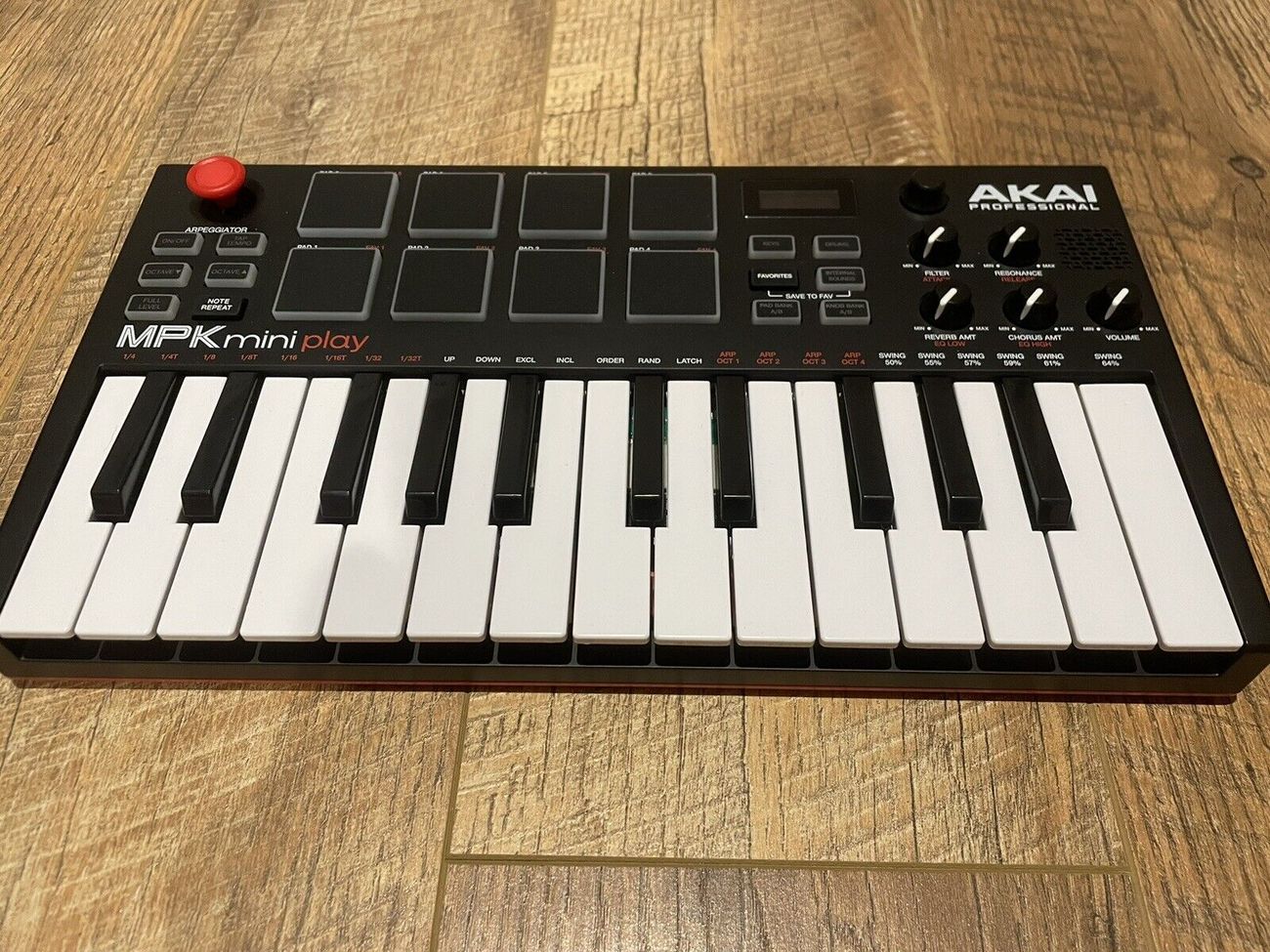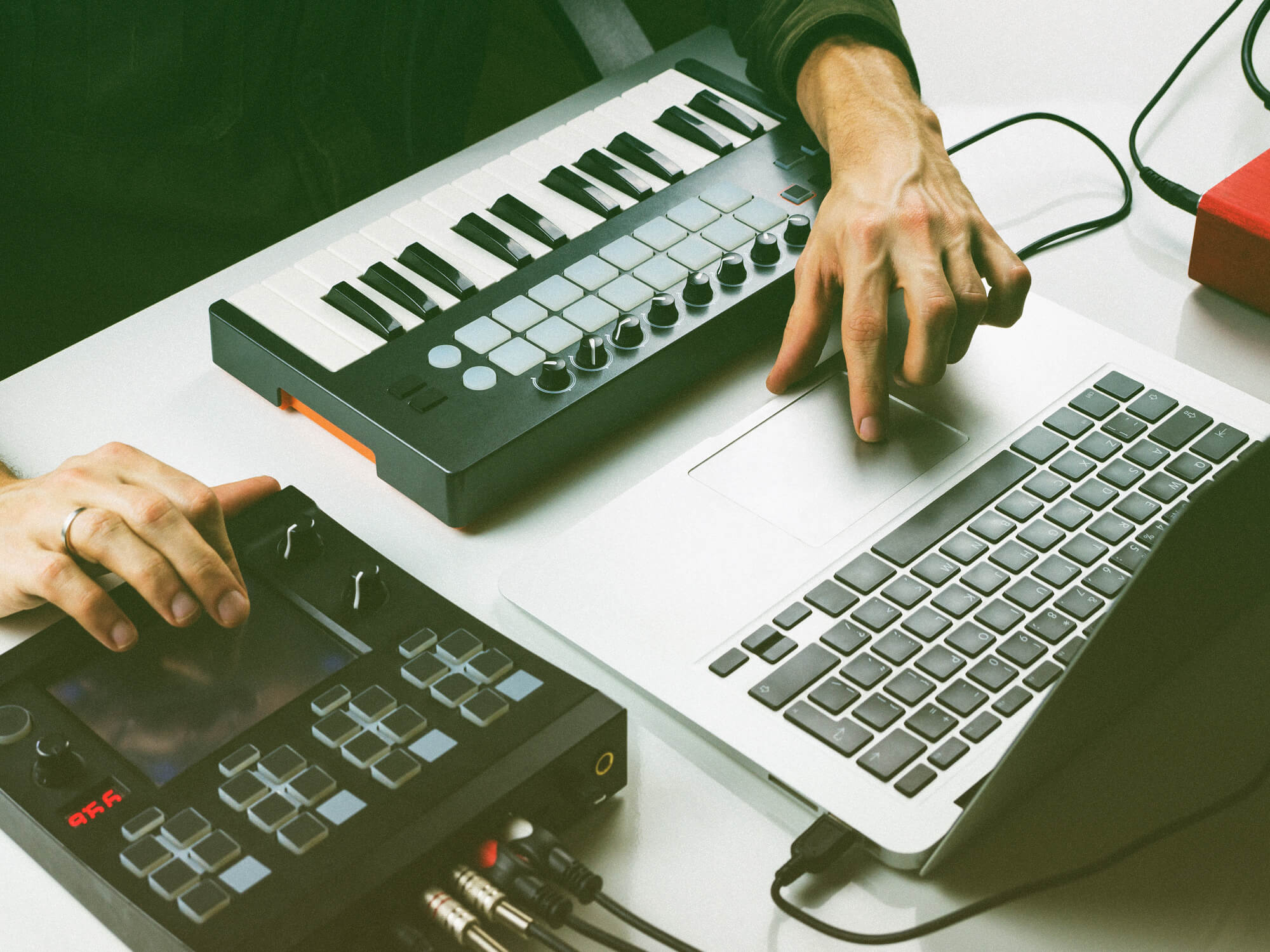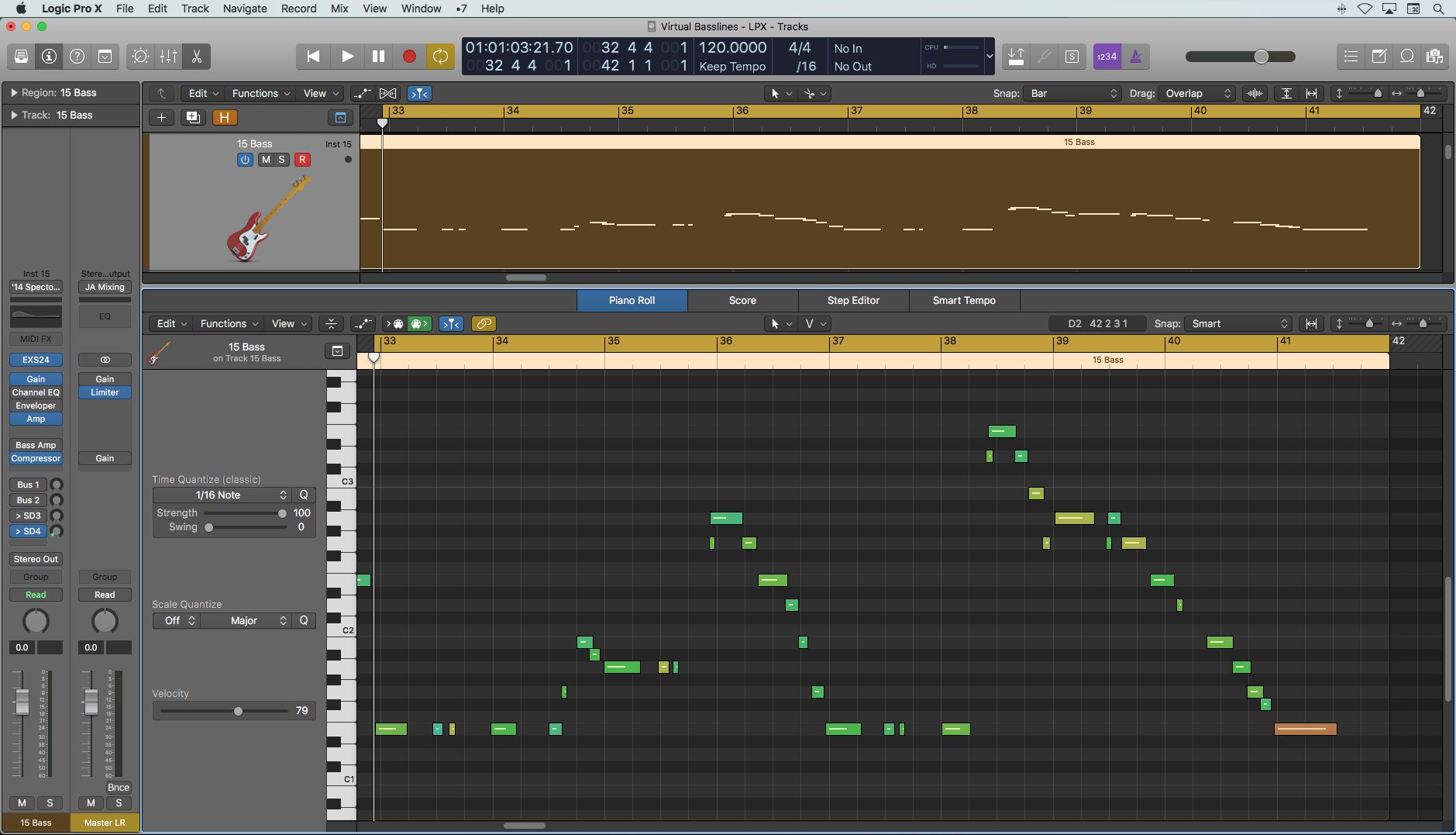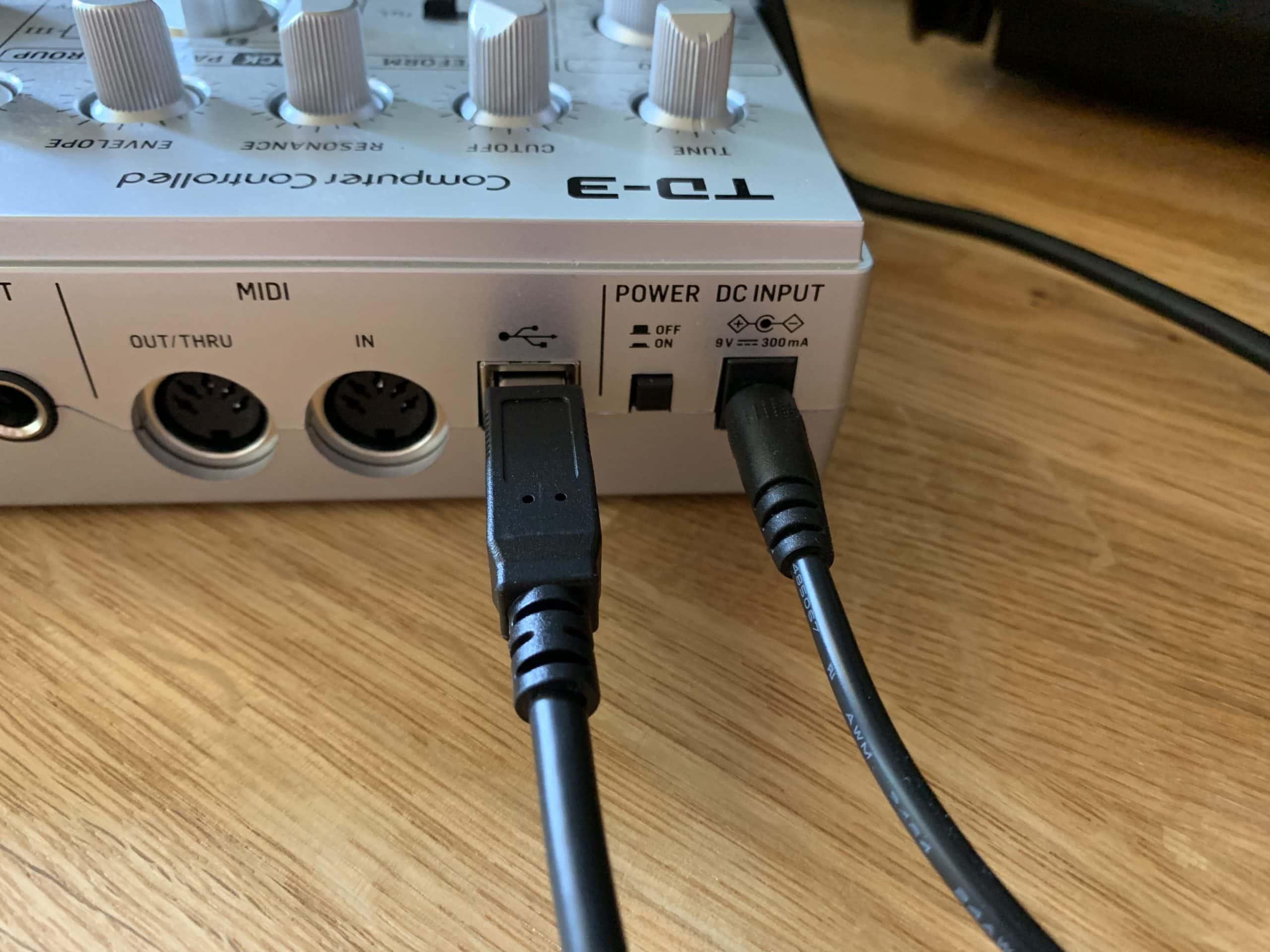Home>Production & Technology>MIDI>How To Make MIDI Basslines Patterns


MIDI
How To Make MIDI Basslines Patterns
Modified: February 22, 2024
Learn how to create captivating MIDI bassline patterns with our comprehensive guide. Master the art of MIDI and take your music production to the next level!
(Many of the links in this article redirect to a specific reviewed product. Your purchase of these products through affiliate links helps to generate commission for AudioLover.com, at no extra cost. Learn more)
Table of Contents
Introduction
When it comes to music production, basslines play a crucial role in shaping the overall sound and feel of a track. Whether you're crafting a pulsating dance anthem or a soulful ballad, the bassline serves as the rhythmic backbone, anchoring the composition and driving the groove. In the realm of MIDI music creation, the flexibility and versatility of MIDI technology empower musicians and producers to craft intricate and dynamic basslines with precision and creativity.
In this comprehensive guide, we'll delve into the art of crafting MIDI basslines, exploring the fundamental techniques and creative approaches that can elevate your music production endeavors. From understanding the unique characteristics of MIDI basslines to harnessing the power of MIDI effects, this guide will equip you with the knowledge and insights to infuse your tracks with captivating and compelling bassline patterns.
Whether you're a seasoned producer seeking to expand your sonic palette or an aspiring musician eager to delve into the realm of MIDI production, mastering the art of MIDI basslines opens up a world of possibilities. By the end of this guide, you'll be equipped with the tools and know-how to craft captivating basslines that resonate with listeners and bring your musical vision to life. So, let's embark on this sonic journey and unlock the secrets of crafting mesmerizing MIDI basslines that captivate and inspire.
Understanding MIDI Basslines
MIDI basslines serve as the rhythmic foundation of a musical composition, providing depth, groove, and energy to the overall sound. Unlike traditional audio recordings, MIDI basslines are created and manipulated using Musical Instrument Digital Interface (MIDI) technology, which allows for precise control over note pitches, durations, velocities, and other musical parameters. Understanding the unique characteristics and capabilities of MIDI basslines is essential for harnessing their full potential in music production.
One of the key advantages of MIDI basslines is their inherent flexibility. Unlike recorded audio basslines, MIDI basslines can be easily edited, transposed, and rearranged within a digital audio workstation (DAW). This flexibility enables producers to experiment with different musical ideas, chord progressions, and rhythmic patterns, empowering them to craft basslines that perfectly complement the mood and style of a composition.
Furthermore, MIDI basslines offer a wide range of sonic possibilities. By selecting the appropriate virtual instrument or synthesizer, producers can sculpt the timbre, tone, and character of the bassline to suit their creative vision. Whether aiming for a deep, rumbling sub-bass or a punchy, percussive mid-range bass, MIDI technology allows for precise sound design and customization, enabling producers to tailor the bassline to fit seamlessly within the mix.
In addition to their flexibility and sonic versatility, MIDI basslines also lend themselves to expressive performance techniques. MIDI controllers, such as keyboards, pads, or electronic drums, enable musicians and producers to infuse the bassline with dynamic nuances, such as varying note velocities, pitch bends, and modulations. These expressive elements add depth and emotion to the bassline, enhancing its musical impact and creating a more engaging listening experience.
Understanding MIDI basslines involves grasping the technical aspects of MIDI sequencing and note programming. By utilizing MIDI piano roll editors or step sequencers within a DAW, producers can precisely define the timing and duration of each bass note, as well as create intricate rhythmic patterns and melodic motifs. This level of control empowers producers to craft basslines that are not only rhythmically solid but also melodically compelling, enriching the overall musical composition.
In essence, comprehending MIDI basslines entails recognizing their inherent flexibility, sonic potential, and expressive capabilities. By harnessing these attributes, producers can elevate their music productions with captivating basslines that drive the rhythm, enhance the melody, and imbue the composition with a sense of depth and groove.
Choosing the Right Instrument
Selecting the right instrument for your MIDI basslines is a pivotal decision that significantly shapes the sonic character and emotive impact of your compositions. With a myriad of virtual instruments and synthesizers available in the digital realm, each offering distinct tonal qualities and sonic capabilities, the process of choosing the ideal instrument demands careful consideration and creative foresight.
When embarking on the quest to choose the right instrument for your MIDI basslines, it's essential to assess the sonic palette and musical vision of your composition. Are you aiming for a deep, resonant sub-bass that underpins the rhythmic foundation of a dance track? Or perhaps you seek a warm, expressive fretless bass sound for a soulful jazz ballad? By aligning the sonic characteristics of the instrument with the stylistic and emotional essence of your composition, you can ensure that the bassline seamlessly integrates into the overarching musical narrative.
Virtual instruments and synthesizers designed specifically for bass sounds offer a diverse array of sonic textures and timbres. From classic analog emulations that evoke the warmth and grit of vintage hardware to cutting-edge digital synthesizers capable of producing futuristic and dynamic bass tones, the market is replete with options to suit every musical genre and production style. Additionally, many virtual instruments feature customizable parameters, such as filter cutoff, resonance, and envelope shaping, allowing producers to sculpt the bass sound to their exact specifications.
In the realm of MIDI bassline production, the choice of instrument extends beyond traditional bass guitar emulations. Synthesizers, both subtractive and wavetable, offer boundless creative potential for crafting unique and evocative bass sounds. By exploring the sonic capabilities of synthesizers, producers can introduce unconventional textures, modulations, and sonic manipulations to the bassline, adding an element of intrigue and innovation to the composition.
Furthermore, the decision to choose the right instrument encompasses the consideration of playability and expressiveness. MIDI controllers, such as velocity-sensitive keyboards, pad controllers, and electronic wind instruments, enable musicians and producers to imbue the bassline with dynamic articulations and performance nuances. This tactile interaction with the instrument elevates the expressiveness of the bassline, infusing it with human-like phrasing and emotive qualities that resonate with listeners on a profound level.
In essence, choosing the right instrument for your MIDI basslines involves a thoughtful synthesis of sonic aesthetics, musical context, and creative exploration. By aligning the tonal characteristics of the instrument with the emotive essence of your composition and leveraging the expressive capabilities of MIDI controllers, you can craft basslines that not only anchor the rhythm but also evoke emotion, captivate listeners, and elevate the overall musical experience.
Creating Basic Bassline Patterns
Crafting compelling and rhythmically engaging bassline patterns forms the bedrock of music production, infusing compositions with groove, energy, and sonic cohesion. When venturing into the realm of MIDI bassline creation, mastering the art of constructing basic bassline patterns lays the foundation for captivating musical arrangements.
The process of creating basic bassline patterns begins with a keen understanding of rhythmic and harmonic principles. Whether you're aiming for a driving four-on-the-floor pulse in an electronic dance track or a soulful, syncopated groove in a jazz composition, the rhythmic structure of the bassline sets the stage for the entire musical ensemble. By establishing a strong rhythmic foundation, the bassline not only propels the momentum of the composition but also interlocks with other instrumental elements to create a cohesive and compelling sonic tapestry.
Utilizing the MIDI piano roll editor or step sequencer within your digital audio workstation (DAW), you can meticulously define the timing, duration, and pitch of each bass note. Experimenting with different note lengths, rhythmic subdivisions, and accentuations allows you to craft bassline patterns that groove and evolve dynamically, enhancing the overall rhythmic drive and musicality of the composition.
When creating basic bassline patterns, it's essential to consider the interplay between the bassline and other musical elements, such as drums, chords, and melodies. By aligning the rhythmic motifs and melodic phrasings of the bassline with the broader musical context, you can ensure that the bassline complements and enhances the overall composition. Whether through subtle rhythmic syncopations that interlock with the drum groove or melodic motifs that harmonize with the chord progression, the bassline contributes to the cohesive and immersive nature of the music.
Moreover, incorporating variations and developments within the basic bassline patterns adds depth and interest to the musical arrangement. By introducing subtle variations in note velocities, articulations, and melodic contours, you can infuse the bassline with dynamic nuances that captivate the listener's ear and sustain their engagement throughout the composition. These variations can range from rhythmic fills and embellishments to melodic flourishes and modulations, enriching the bassline with expressive and evolving characteristics.
In essence, creating basic bassline patterns involves a delicate balance of rhythmic precision, harmonic awareness, and creative expression. By harnessing the rhythmic potential of MIDI sequencing and infusing the bassline with dynamic variations, you can craft compelling bassline patterns that drive the groove, enhance the musical narrative, and captivate listeners with their infectious energy and emotive resonance.
Adding Variation to Basslines
Adding variation to basslines is a pivotal aspect of music production, enabling producers to infuse their compositions with dynamic nuances, expressive flourishes, and evolving sonic textures. By introducing subtle variations and developments within the bassline, producers can captivate listeners, sustain their engagement, and elevate the overall musical experience.
One of the primary methods of adding variation to basslines involves incorporating rhythmic embellishments and fills. By introducing syncopated rhythms, ghost notes, and rhythmic accents, producers can infuse the bassline with a sense of rhythmic intrigue and forward momentum. These rhythmic embellishments not only enhance the groove of the composition but also create a sense of anticipation and excitement for the listener.
Furthermore, varying the articulations and dynamics of the bassline adds depth and expressiveness to the musical arrangement. By modulating note velocities, employing legato and staccato phrasing, and experimenting with articulation techniques, producers can imbue the bassline with a nuanced and emotive quality. These subtle variations in articulation contribute to the musical narrative, evoking different emotional responses and enhancing the overall impact of the composition.
In addition to rhythmic and articulatory variations, introducing melodic developments and motifs within the bassline enriches the musical tapestry. By incorporating melodic flourishes, octave leaps, and harmonic variations, producers can elevate the melodic content of the bassline, creating memorable motifs that resonate with the listener. These melodic variations not only add interest and depth to the bassline but also contribute to the overall melodic development of the composition.
Moreover, leveraging MIDI automation and modulation effects allows producers to introduce evolving sonic textures and timbral shifts within the bassline. By manipulating filter cutoffs, resonance, and modulation parameters, producers can sculpt the tonal characteristics of the bassline, creating dynamic sonic transformations that captivate the listener's ear. These sonic variations contribute to the evolving nature of the bassline, adding a layer of intrigue and innovation to the composition.
In essence, adding variation to basslines involves a creative exploration of rhythmic, articulatory, melodic, and sonic dimensions. By infusing the bassline with dynamic nuances and evolving textures, producers can craft compelling musical arrangements that engage listeners, evoke emotion, and leave a lasting impression.
Using MIDI Effects for Basslines
Harnessing the power of MIDI effects opens up a realm of creative possibilities for shaping, enhancing, and transforming basslines within a music production context. MIDI effects, integrated within digital audio workstations (DAWs) and MIDI sequencing environments, offer a diverse array of tools and processors designed to manipulate the musical attributes of MIDI data, enabling producers to craft intricate and dynamic basslines with precision and ingenuity.
One of the fundamental MIDI effects utilized in bassline production is the arpeggiator. This versatile tool generates rhythmic patterns by triggering individual notes from a chord or musical phrase in rapid succession, creating pulsating and animated bassline sequences. By adjusting the arpeggiator's rate, pattern, and note order, producers can infuse the bassline with rhythmic complexity and motion, enriching the overall musical arrangement with dynamic and captivating rhythms.
Additionally, MIDI quantization and groove templates serve as indispensable tools for refining the rhythmic feel and timing of basslines. By applying quantization settings to bass MIDI data, producers can align note timings to a predefined grid, ensuring rhythmic precision and consistency. Moreover, groove templates allow for the injection of human-like feel and swing into the bassline, imbuing it with organic and natural rhythmic nuances that elevate its musicality and groove.
Furthermore, MIDI modulation effects, such as modulation wheels, pitch bend, and aftertouch, enable producers to introduce expressive and dynamic articulations to the bassline. By manipulating modulation parameters, producers can infuse the bassline with pitch variations, timbral shifts, and dynamic modulations, adding a layer of emotive and evolving qualities to the bassline's performance. These modulation effects empower producers to craft basslines that resonate with emotion and captivate listeners with their expressive depth.
Moreover, MIDI effects, such as MIDI delay and MIDI echo, offer creative tools for adding spatial depth and rhythmic complexity to basslines. By applying timed delays and echo repetitions to bass MIDI notes, producers can create immersive and atmospheric textures, enhancing the spatial dimension of the bassline and imbuing it with a sense of depth and movement within the mix.
In essence, using MIDI effects for basslines empowers producers to sculpt, enhance, and innovate the sonic characteristics of the bassline, elevating its rhythmic, expressive, and spatial dimensions. By leveraging the diverse palette of MIDI effects, producers can infuse their basslines with dynamic rhythms, expressive articulations, and captivating sonic textures, enriching their musical compositions with depth, emotion, and creativity.
Conclusion
In the realm of music production, MIDI basslines serve as the rhythmic heartbeat and sonic foundation of compositions, driving the groove, enhancing the melodic narrative, and captivating listeners with their infectious energy. Throughout this comprehensive guide, we've embarked on a sonic journey, delving into the art of crafting MIDI basslines and exploring the fundamental techniques and creative approaches that empower producers to infuse their compositions with captivating and compelling bassline patterns.
From understanding the unique characteristics of MIDI basslines to harnessing the power of MIDI effects, we've unraveled the intricacies of MIDI bassline production, equipping producers and musicians with the knowledge and insights to elevate their music production endeavors. By comprehending the inherent flexibility, sonic potential, and expressive capabilities of MIDI basslines, producers can unleash their creative vision and craft basslines that resonate with emotion, energy, and musicality.
Choosing the right instrument for MIDI basslines emerged as a pivotal decision, shaping the sonic character and emotive impact of compositions. By aligning the tonal characteristics of the instrument with the stylistic and emotional essence of the composition, producers can ensure that the bassline seamlessly integrates into the overarching musical narrative, evoking emotion, and captivating listeners with its sonic allure.
Crafting basic bassline patterns laid the foundation for rhythmically engaging and melodically compelling compositions. By harnessing the rhythmic potential of MIDI sequencing and infusing the bassline with dynamic variations, producers can craft compelling bassline patterns that drive the groove, enhance the musical narrative, and captivate listeners with their infectious energy and emotive resonance.
Adding variation to basslines emerged as a pivotal aspect of music production, enabling producers to infuse their compositions with dynamic nuances, expressive flourishes, and evolving sonic textures. By introducing subtle variations and developments within the bassline, producers can captivate listeners, sustain their engagement, and elevate the overall musical experience, leaving a lasting impression on the listener's ear.
Finally, harnessing the power of MIDI effects offered a realm of creative possibilities for shaping, enhancing, and transforming basslines within a music production context. By leveraging the diverse palette of MIDI effects, producers can infuse their basslines with dynamic rhythms, expressive articulations, and captivating sonic textures, enriching their musical compositions with depth, emotion, and creativity.
In essence, mastering the art of crafting MIDI basslines empowers producers and musicians to infuse their compositions with depth, energy, and emotive resonance, elevating their sonic creations to new heights of musical expression and creativity. By embracing the inherent flexibility and expressive potential of MIDI basslines, producers can embark on a sonic odyssey, crafting captivating and compelling basslines that resonate with listeners and bring their musical vision to life.











